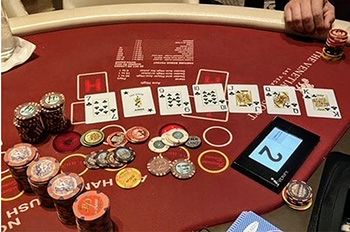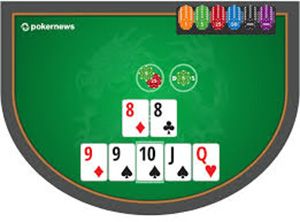Gambler Hits the Jackpot: $5 Bet at the Venetian Pays Out $2.2 Million

Who says you need to go big to win big? A $5 wager at the Venetian just proved that sometimes, the smallest bets have the biggest payoffs, with one lucky gambler walking away $2.2 million richer!
The Largest Pai Gow Progressive Jackpot in Venetian History
In a stunning turn of luck that could make even the most stoic poker face break into a grin, a gambler at the Venetian Resort turned a mere $5 side bet into a whopping $2,211,469 windfall!

The extraordinary hand that sealed the deal was a seven-card straight flush, (the 7 of spades, 9 of spades, 10 of spades, Jack of spades, Queen of spades, King of spades and a joker, which served as a wild card filling in for the 8 of spades.7?9?10?J?Q?K?) while playing Pai Gow on Sunday, clinching the largest Pai Gow Progressive jackpot in the Venetian's history and the second largest in Las Vegas history, according to Las Vegas Locally.
Big Wins from Pittsburgh to Las Vegas
This has been far from the first time a player has struck it big playing Pai Gow Poker!
Earlier this year, in January, a fortunate gambler at Pittsburgh's Rivers Casino made headlines when they hit an astounding $1.4 million jackpot.
Fast forward to May, and the bright lights of Las Vegas witnessed another remarkable win. A local player, trying their luck at Pai Gow Poker in a bustling downtown hotel, walked away with a notable $220,000. This win demonstrated that the odds can occasionally tilt in favor of the players rather than the house.
These stories serve as compelling evidence that luck remains the most unpredictable element in the grand spectacle of casino gaming, capable of turning an ordinary night into an extraordinary one.
What is Pai Gow Poker?
Pai Gow Poker is a modern game with roots deeply embedded in traditional Chinese gaming. Its origins trace back to Pai Gow, an ancient game played with a set of 32 Chinese dominoes that dates back to the Song Dynasty. In Pai Gow, players build hands with dominoes to beat their opponents, reflecting strategic thinking and a bit of luck.

Pai Gow Poker emerged in the 1980s, designed by Sam Torosian, who sought to blend the essence of Pai Gow with the familiar structure of poker. The game retains the strategic depth of its ancestor while incorporating poker��s betting and hand-ranking elements, creating a distinctive fusion of cultural heritage and modern gameplay.
How to Play Pai Gow Poker?
In this contemporary version, players are dealt seven cards. Based on traditional poker, you split the cards into two hands: the 'high hand' (five cards) and the 'low hand' (two cards).
A player can then win, lose, or push (tie) a hand based on the following scenarios:
- The player wins their bet when both of the player��s hands are better than both of the banker��s hands. The amount won is the amount of a bet less a commission (usually 5%).
- The player pushes (ties) and has their bet refunded when only one of the player��s hands beats one of the banker��s hand. This applies whether the banker has won or tied a hand while losing the other hand.
- The player loses their bet when the player loses or ties both hands against the banker.
Piqued your interest? Do you want to give Pai Gow a go?
For full, detailed instructions on how to play Pai Gow, you can refer to the PokerNews Guide on How to Play Pai Gow or check out the Venetian��s Guide on Pai Gow Basic Rules.
The excitement of Pai Gow Poker, with its rich history and unique blend of strategic and luck-based elements, continues to captivate players from all corners of the world. From the bright lights of Las Vegas to the bustling casinos of Pittsburgh, we��re reminded that in the realm of casino games, the stakes are high and the potential rewards even higher. Let's hope your next game is just as lucky!









